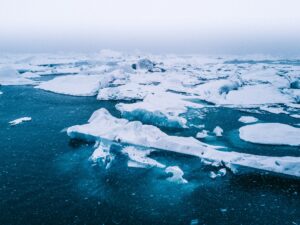 The USA researchers started a number of experiments that aim to analyze the first data about seafloor under Arctic sea ice with the usage of a new method. The research team was able to connect a distributed acoustic sensing (DAS) system with a fiber optic cable. The cable vibrations can record the data 24/7. That helped the scientists to get all the activities and changes within the ocean all day long. This was the first time in history when a DAS system was used on the seafloor of the Arctic or Antarctic oceans.
The USA researchers started a number of experiments that aim to analyze the first data about seafloor under Arctic sea ice with the usage of a new method. The research team was able to connect a distributed acoustic sensing (DAS) system with a fiber optic cable. The cable vibrations can record the data 24/7. That helped the scientists to get all the activities and changes within the ocean all day long. This was the first time in history when a DAS system was used on the seafloor of the Arctic or Antarctic oceans.
The appliance looks like an electronic box that is attached to the fiber optic cable on land. It uses a laser to send thousands of short pulses of light. The small amount of the light is reflected back. And the reflected light helps the appliance to monitor events along with the fiber and store the data on hard drives.
According to the research, the DAS technology showed the icequakes, different climate signals, and marine life. The researchers are expecting to note other climate signals like ocean wave height, timing, and distribution of sea ice breakup, and ice thickness, etc. The usage of the distributed acoustic sensing system has the potential to record a variety of Arctic phenomena so the scientists can better see the climate change effects and sea life. Moreover, the DAS system makes it cost-effective and safe in comparison with the other methods. The scientists have already recorded a number of events that the traditional hydrophone or ocean bottom seismometers couldn’t even detect. With the help of the DAS system, the scientists hope to also record whale songs.
However, the research team has to face challenges during the first week of the tests. And the most difficult one was the harsh climate. It was really cold, most of the territory is tundra. It’s snowing most of the time and it’s getting dark really early. No wonder, that the team should find new creative ways of data fixing like DAS technology to get everything working.
That’s why the researchers chose a distributed acoustic sensing system to cope with the weather conditions. Fiber optic cable is double-armored with copper and steel. All the network components are created to hold the extreme Arctic environment. They have no need in sending a boat to plant monitors, moving over the sea ice to install the sensors. This fiber optic cable can exist for years or decades without replacing it.
This project of watching the Arctic ocean with the usage of the distributed acoustic sensing system is going to last over the next two years. The research team will collect the data. And the next third year will be spent on its analysis.
According to the researchers, the production of fiber optic systems based on the DAS technology can be easily automated. However, there is still a space for developing and finding new ways of optimization.
Optromix is a DAS system manufacturer that provides top of the line distributed acoustic sensing systems suitable for monitoring commerce networks. If you have any questions or would like to buy a DAS system, please contact us at info@optromix.com

